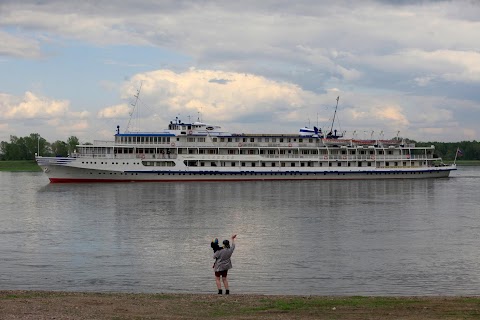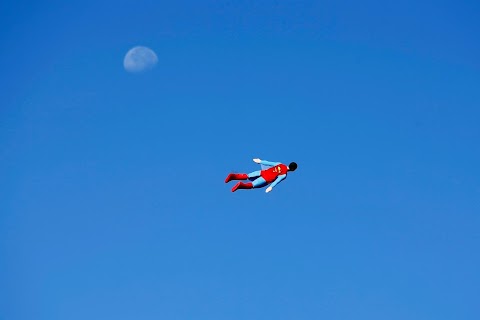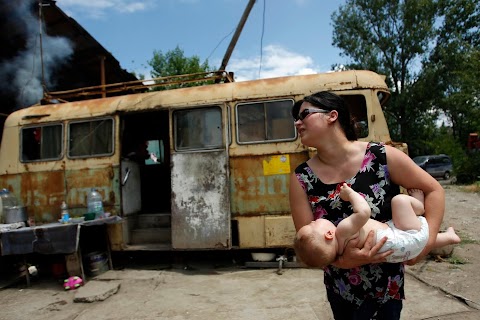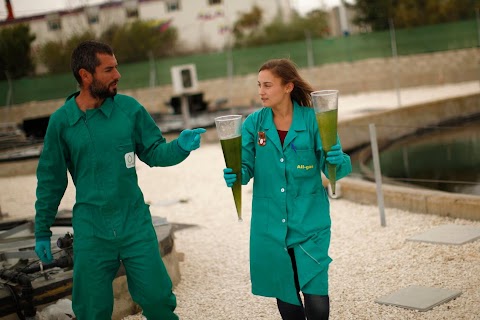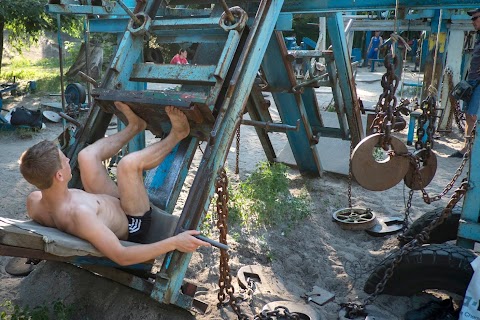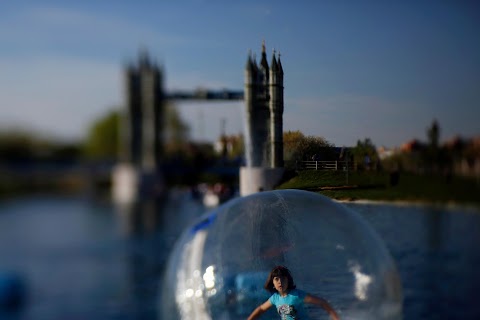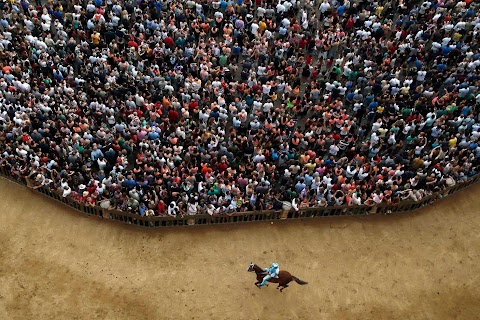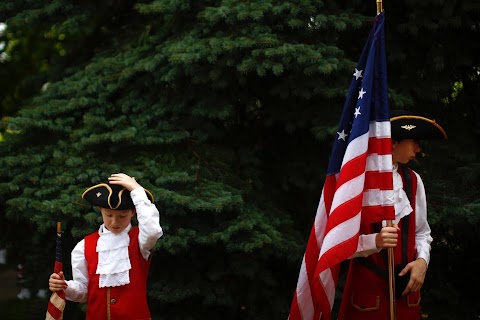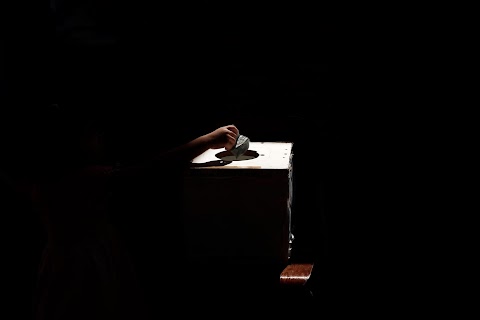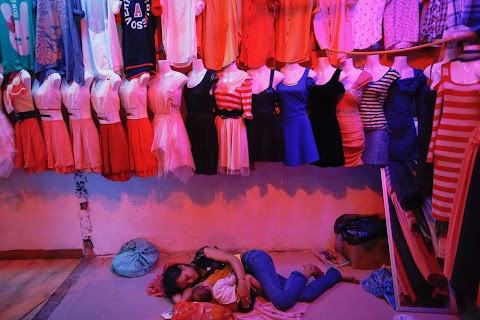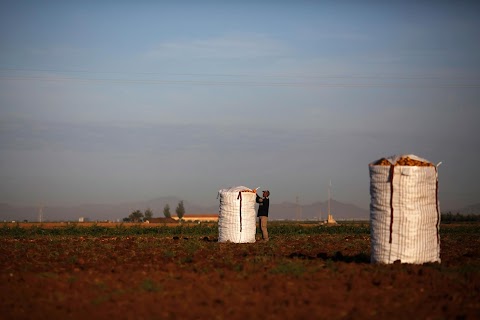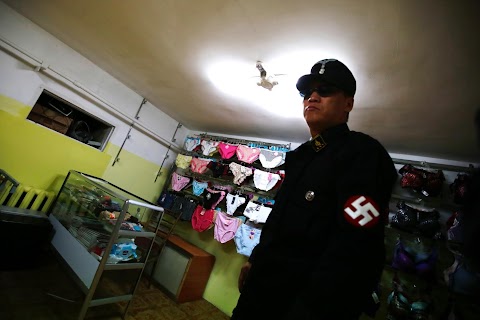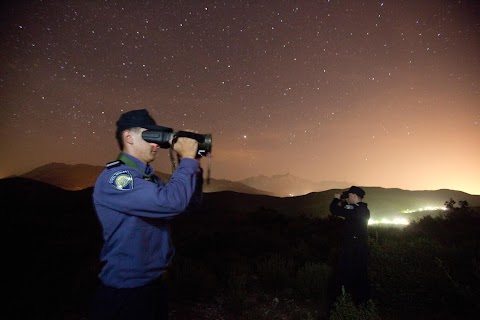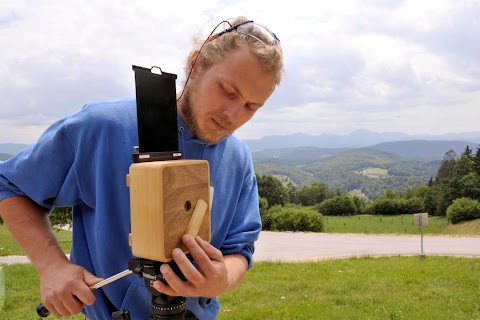
Back to basics
 Srdjan Zivulovic
Srdjan Zivulovic
It might not shoot 14 frames per second, or have an iso of 204,800, but with a bit of light and some old-fashioned film this chunky wooden camera can still take a picture.
The minimalist gadget is the product of Elvis Halilovic, a Slovenian designer who has turned his passion for making pinhole cameras into a business with the help of funding won through a crowdsourcing website.

Instead of lenses, Halilovic’s cameras use tiny holes, a few tenths of a millimetre across, to allow in enough light to take a picture. He has been making the contraptions for the past seven years, and has now founded a business named ONDU to sell them to customers around the world.
Halilovic used the website Kickstarter to advertise his project, asking anyone who was interested to pledge between $1 and $550 in return for a range of products, from an image taken with a pinhole camera to a whole set of the gadgets.
Within a month Halilovic had received almost 11 times his initial funding goal of $10,000, and he now has over 1,000 orders for pinhole cameras on his hands.
Slideshow

Halilovic handcrafts the pinhole cameras at his studio in the Slovenian village of Lopatnik. In a week, he says he can make around 100 of the devices, which he is selling for $70-$200.

The cameras, crafted from two different types of wood, are partially held together with tiny magnets, so there are no visible screws on the outside.

Different models of pinhole camera are designed to be loaded up with different types of film.

Elvis Halilovic poses for a photo taken with one of the cameras, which have a long exposure time of up to a few minutes.

The young designer dries film negative after developing it.

In the red light of the darkroom, Halilovic develops a print taken with a wooden camera.

Photos like this one, taken with the devices, have a nostalgic, muted look.

Halilovic has his photo taken with a pinhole camera, while standing next to another of the wooden gadgets.
“Sweet joy overtook me when I looked through a magnifier at the developed film placed on a lightbox, just like in the good old times.”
I hadn’t been this excited and concerned about a story for a long time: I was on my way to photograph a young designer and his wooden pinhole camera.
Photographing in a pristine way, without a lens and on film is a really amazing experience. Having how worked with digital photography for a long time now, I have gotten used to the ease and speed of shooting, editing and transmitting the captured material to Reuters clients. But suddenly I had to remember all the procedures and tricks involved in capturing and processing in the Leica film format.
That’s why I am grateful to young and ever-cheerful designer and photographer Elvis Halilovic for continuing the idea and development of pinhole cameras.
Elvis got his education at the Academy of Fine Arts and Design in Ljubljana and has been developing his camera ever since. The idea of a pinhole camera came as a counterweight to the quick-thinking ways of today’s digital camera manufacturers.
The camera was made for long-term use and as a designer object, which could be handed down as a family heirloom for generations. Elvis has even noticed that young people want to use their acquired knowledge and develop printed photographs themselves.
After a few years of development, his venture managed to take off with the help of crowdsourcing website Kickstarter. The project got support far beyond his expectations: almost 11 times more than the funding he originally requested. The fact that 1,100 pinhole cameras have already been ordered shows that Elvis is on a path back to the future.
The camera is made out of two different kinds of wood and 14 tiny magnets. Instead of a lens it has a hole with the diameter of 0.2 millimetres. That means it has an aperture of 126 and thus a long exposure time, even up to a few minutes. Elvis developed the pinhole cameras for six different film formats from the classic Leica to 9x12 cm.
After shooting with the Leica format, I felt like I was back in the 70s, when I shot my first photograph and took the film to be developed in a photo studio. Sweet joy overtook me when I looked through a magnifier at the developed film placed on a lightbox, just like in the good old times.
So thank you again Elvis, and good luck on your way back to the future.
